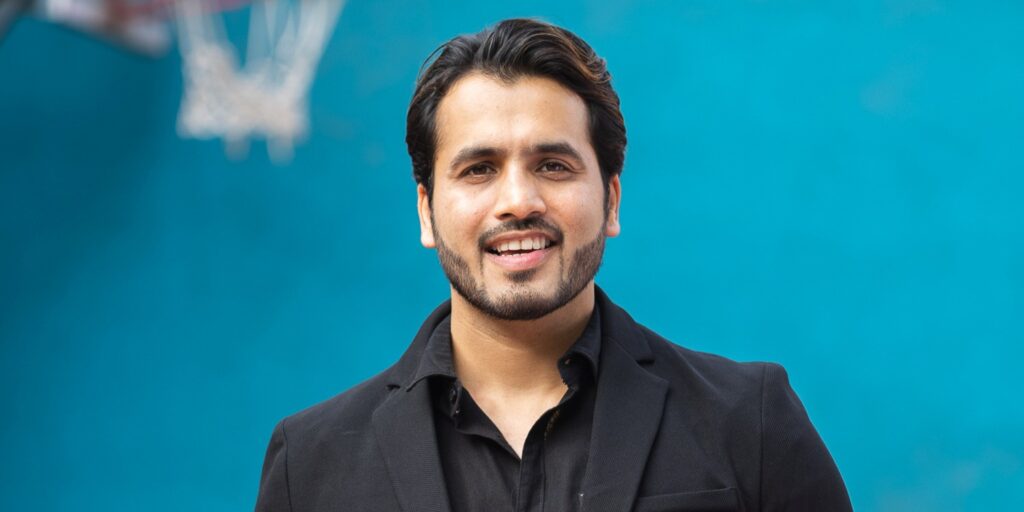
In India, where academics often take center stage, the importance of sports education is slowly gaining momentum. To truly nurture athletic talent and cultivate a vibrant sports culture, efforts must begin at the grassroots—especially in rural India. We spoke with Dr. Vipul Lunawat, Director, ISST Pune, Director, ISST (Institute of Sports Science & Technology), who shared a powerful vision and practical roadmap for making sports more inclusive, accessible, and career-worthy across the nation.
What steps should be taken to ensure that sports education and training reach grassroots levels, particularly in rural India?
As Director of ISST, I believe that grassroots sports development in rural India requires a multi-pronged approach. First, we must establish community-based sports programs that can easily be accessed by rural youth. Collaborating with local schools, panchayats (local governance), and NGOs can help create a strong foundation. It’s crucial to invest in local infrastructure, simple facilities like playgrounds, training equipment, and transportation can make a huge difference.
Furthermore, we should encourage local talent identification programs, where coaches and talent scouts from both urban and rural areas can identify potential athletes early. Technology can also play a role, such as virtual coaching sessions and online fitness programs that can bridge the geographical divide. Lastly, creating awareness about sports as a viable career option among parents, teachers, and community leaders can increase support and engagement from the grassroots level.
Many young athletes struggle to balance their education and sports careers. What advice would you give to students and institutions to help them manage both successfully?
Balancing education and sports is undoubtedly challenging, but it’s not impossible with the right approach. My advice to young athletes is to prioritize time management. Students must learn how to allocate specific times for their studies, training, and rest, ensuring that none of the areas are neglected.
Institutions, both educational and sports academies, should create a flexible environment where academics and sports can coexist. This means offering online or evening classes, providing tutors for subjects that are challenging to balance with sports, and accommodating travel schedules for competitions. It’s important for students to communicate openly with their institutions about their training commitments and academic deadlines.
I also recommend that young athletes adopt a mindset of balance rather than perfection, understanding that there will be times when sports require more focus and other times when academics take precedence. Mentoring and counselling services can also help athletes manage stress and ensure they remain mentally and emotionally healthy during this challenging balancing act.
The representation of women in sports and fitness professions is increasing. What initiatives can further encourage female participation in this field?
Encouraging more women to participate in sports and fitness professions requires creating a supportive and inclusive environment. To that end, we must invest in women’s sports programs at every level, from grassroots to elite, with a particular focus on skill development and mentorship. At ISST, we can build specialized training programs for women, offering scholarships and incentives for those who wish to pursue careers in sports coaching, sports science, physiotherapy, and fitness training.
Another key initiative would be the active involvement of female role models in sports, as this helps young girls envision a career in the field. Encouraging the media to highlight female athletes, coaches, and sports professionals can have a huge impact on changing perceptions. Moreover, eliminating gender bias in sports institutions and creating safe, welcoming spaces for women can further boost female participation. We also need to address the societal pressures that discourage women from pursuing sports and fitness careers, such as the expectation to prioritize domestic responsibilities over personal passions.
In India, sports is often considered secondary to academics. How can we shift this mindset and make sports a mainstream career choice?
Changing this mindset requires a systemic shift, and it starts with education and awareness. Schools and parents need to understand that sports not only enhance physical fitness but also build critical life skills such as discipline, leadership, teamwork, and resilience that are essential for success in any field. This is something ISST is constantly advocating.
Institutions should promote sports as a legitimate career choice by providing pathways for professional development in sports management, sports science, coaching, and athletic training. We also need to strengthen the support systems for young athletes, such as creating better sports scholarships, ensuring job security for those pursuing sports, and giving them the necessary training and facilities to reach their full potential.
In addition, successful Indian athletes who have transitioned to mainstream careers should be celebrated as role models. This will help dispel the notion that sports is just a “hobby” or “extracurricular activity.” By integrating sports into the broader curriculum and professional development programs, we can gradually shift the perception of sports as secondary to academics.
Where do you see the future of sports education in India?
The future of sports education in India is bright, but it will require significant investment and long-term planning. I see a future where sports is integrated into mainstream education, and every school has a well-structured sports curriculum alongside traditional academics. Over the next decade, I foresee an expansion of sports infrastructure, including state-of-the-art training centers, both in rural and urban areas, providing equal access to all.
There will be a greater emphasis on sports science, technology, and data analytics, which will play a crucial role in the development of athletes. Furthermore, partnerships between academic institutions, private organizations, and sports federations will create a more robust sports ecosystem, offering a seamless path for athletes from school to the professional level. We will see a surge in the number of career opportunities within sports, from coaching and fitness training to sports journalism and sports management.
At ISST, we are focused on being at the forefront of this sports revolution, providing cutting-edge training programs that blend academic learning with practical experience in the sports industry. With the right policies, funding, and awareness, sports education in India will not only grow but also thrive, leading to India emerging as a sporting powerhouse globally.



